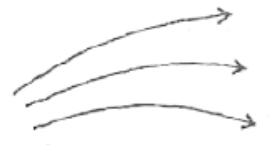The sale of electric bulbs on different days of a week is shown below : What can we conclude from the said pictograph?
To solve the problem regarding the sale of electric bulbs as shown in the pictograph, we will follow these steps:
1. Understanding the Pictograph:
- Each figure of a bulb represents 2 bulbs.
- We need to count the number of bulb figures for each day and then multiply by 2 to find the total number of bulbs sold.
2. Counting Bulbs Sold Each Day:
- Monday: There are 6 bulb figures.
- Calculation: 6 figures × 2 bulbs/figure = 12 bulbs.
- Tuesday: There are 8 bulb figures.
- Calculation: 8 figures × 2 bulbs/figure = 16 bulbs.
- Wednesday: There are 4 bulb figures.
- Calculation: 4 figures × 2 bulbs/figure = 8 bulbs.
- Thursday: There are 5 bulb figures.
- Calculation: 5 figures × 2 bulbs/figure = 10 bulbs.
- Friday: There are 7 bulb figures.
- Calculation: 7 figures × 2 bulbs/figure = 14 bulbs.
- Saturday: There are 4 bulb figures.
- Calculation: 4 figures × 2 bulbs/figure = 8 bulbs.
- Sunday: There are 9 bulb figures.
- Calculation: 9 figures × 2 bulbs/figure = 18 bulbs.
3. Summarizing the Data:
- Monday: 12 bulbs
- Tuesday: 16 bulbs
- Wednesday: 8 bulbs
- Thursday: 10 bulbs
- Friday: 14 bulbs
- Saturday: 8 bulbs
- Sunday: 18 bulbs
4. Finding the Maximum and Minimum Sales:
- Maximum Sales: The highest number of bulbs sold is on Sunday (18 bulbs).
- Minimum Sales: The lowest number of bulbs sold is on Wednesday and Saturday (8 bulbs each).
5. Finding Days with Same Sales:
- The same number of bulbs (8 bulbs) were sold on Wednesday and Saturday.
6. Total Bulbs Sold in the Week:
- Total = 12 + 16 + 8 + 10 + 14 + 8 + 18 = 86 bulbs.
7. Calculating Cartons Needed:
- If one carton can hold 9 bulbs, we need to find out how many cartons are needed for 86 bulbs.
- Calculation: 86 bulbs ÷ 9 bulbs/carton = 9.56 cartons.
- Since we can't have a fraction of a carton, we round up to the nearest whole number, which is 10 cartons.
Conclusion:
- Total bulbs sold on Friday: 14 bulbs.
- Maximum bulbs sold: 18 bulbs on Sunday.
- Days with same sales: Wednesday and Saturday (8 bulbs each).
- Minimum sales: 8 bulbs on Wednesday and Saturday.
- Total cartons needed: Approximately 10 cartons.
- Each figure of a bulb represents 2 bulbs.
- We need to count the number of bulb figures for each day and then multiply by 2 to find the total number of bulbs sold.
- Monday: There are 6 bulb figures.
- Calculation: 6 figures × 2 bulbs/figure = 12 bulbs.
- Tuesday: There are 8 bulb figures.
- Calculation: 8 figures × 2 bulbs/figure = 16 bulbs.
- Wednesday: There are 4 bulb figures.
- Calculation: 4 figures × 2 bulbs/figure = 8 bulbs.
- Thursday: There are 5 bulb figures.
- Calculation: 5 figures × 2 bulbs/figure = 10 bulbs.
- Friday: There are 7 bulb figures.
- Calculation: 7 figures × 2 bulbs/figure = 14 bulbs.
- Saturday: There are 4 bulb figures.
- Calculation: 4 figures × 2 bulbs/figure = 8 bulbs.
- Sunday: There are 9 bulb figures.
- Calculation: 9 figures × 2 bulbs/figure = 18 bulbs.
- Monday: 12 bulbs
- Tuesday: 16 bulbs
- Wednesday: 8 bulbs
- Thursday: 10 bulbs
- Friday: 14 bulbs
- Saturday: 8 bulbs
- Sunday: 18 bulbs
- Maximum Sales: The highest number of bulbs sold is on Sunday (18 bulbs).
- Minimum Sales: The lowest number of bulbs sold is on Wednesday and Saturday (8 bulbs each).
- The same number of bulbs (8 bulbs) were sold on Wednesday and Saturday.
- Total = 12 + 16 + 8 + 10 + 14 + 8 + 18 = 86 bulbs.
- If one carton can hold 9 bulbs, we need to find out how many cartons are needed for 86 bulbs.
- Calculation: 86 bulbs ÷ 9 bulbs/carton = 9.56 cartons.
- Since we can't have a fraction of a carton, we round up to the nearest whole number, which is 10 cartons.
- Total bulbs sold on Friday: 14 bulbs.
- Maximum bulbs sold: 18 bulbs on Sunday.
- Days with same sales: Wednesday and Saturday (8 bulbs each).
- Minimum sales: 8 bulbs on Wednesday and Saturday.
- Total cartons needed: Approximately 10 cartons.
Topper's Solved these Questions
Similar Questions
Knowledge Check
From the passage, we can conclude that:
ANew ventures are not risky.BNew ventures are inherently risky.CFinancial investment in a new venture is always non-profitable.DConservative projection of companies' profits is suggested
A survey was carried out on 30 students of class VI in a school. Data about the different modes of transport used by them to travel to school was displayed as pictograph. What can you conclude from the pictograph?
View SolutionIf BOD value of water is 20 ppm then what can we conclude
regarding water ?
View SolutionIf A−B=ϕϕandB−A=ϕ then what can we conclude ?
View SolutionWhat can not we associate from moving electrons
View SolutionDescribe an activity to show that the volumes of different objects are different although their masses are the same. What do you conclude from this?
View SolutionDraw the pressure-distance graph of a longitudinal wave. Compare it with the displacement-graph. What can you conclude from the graph ?
View SolutionIf electric linces of force in a region are represented as shown in the figure, then one can conclude that, electric field is

View Solution
